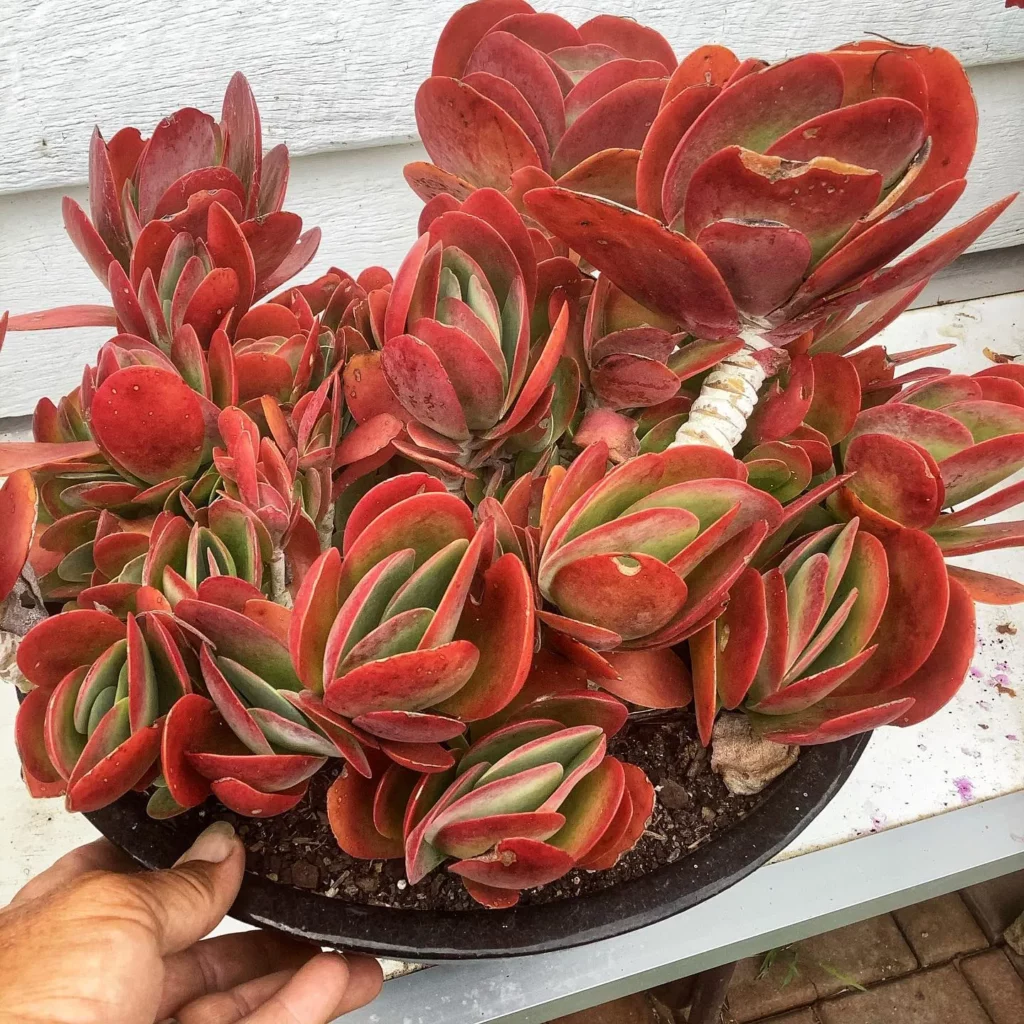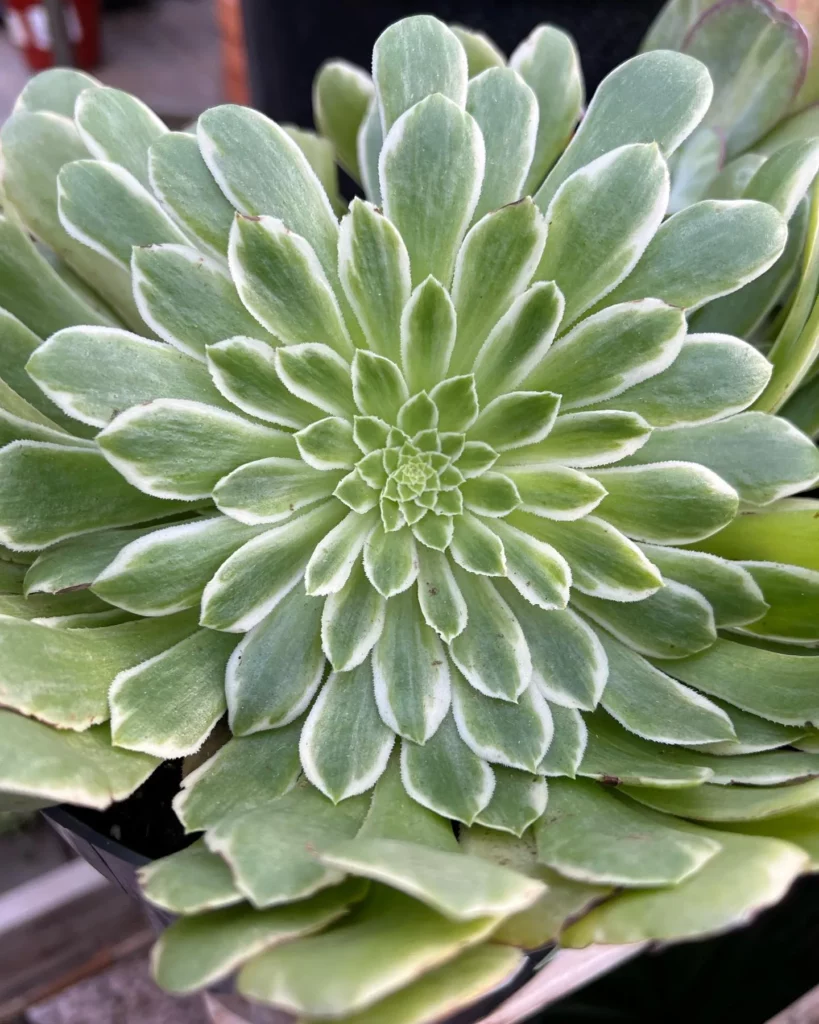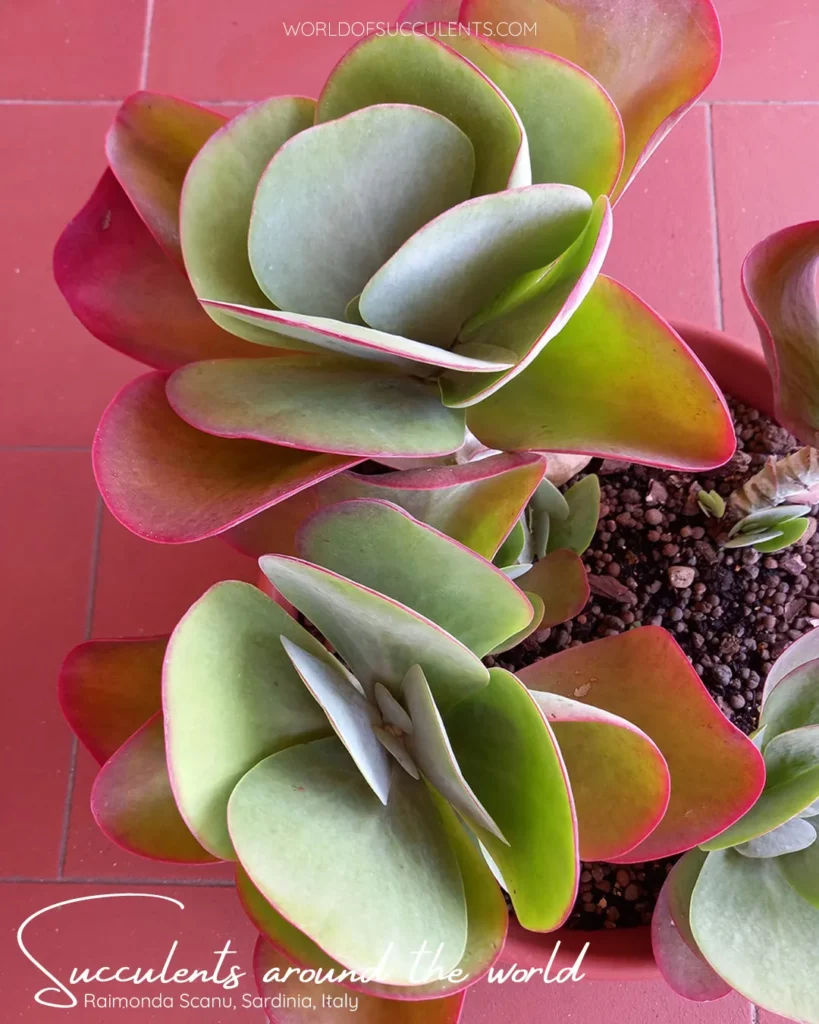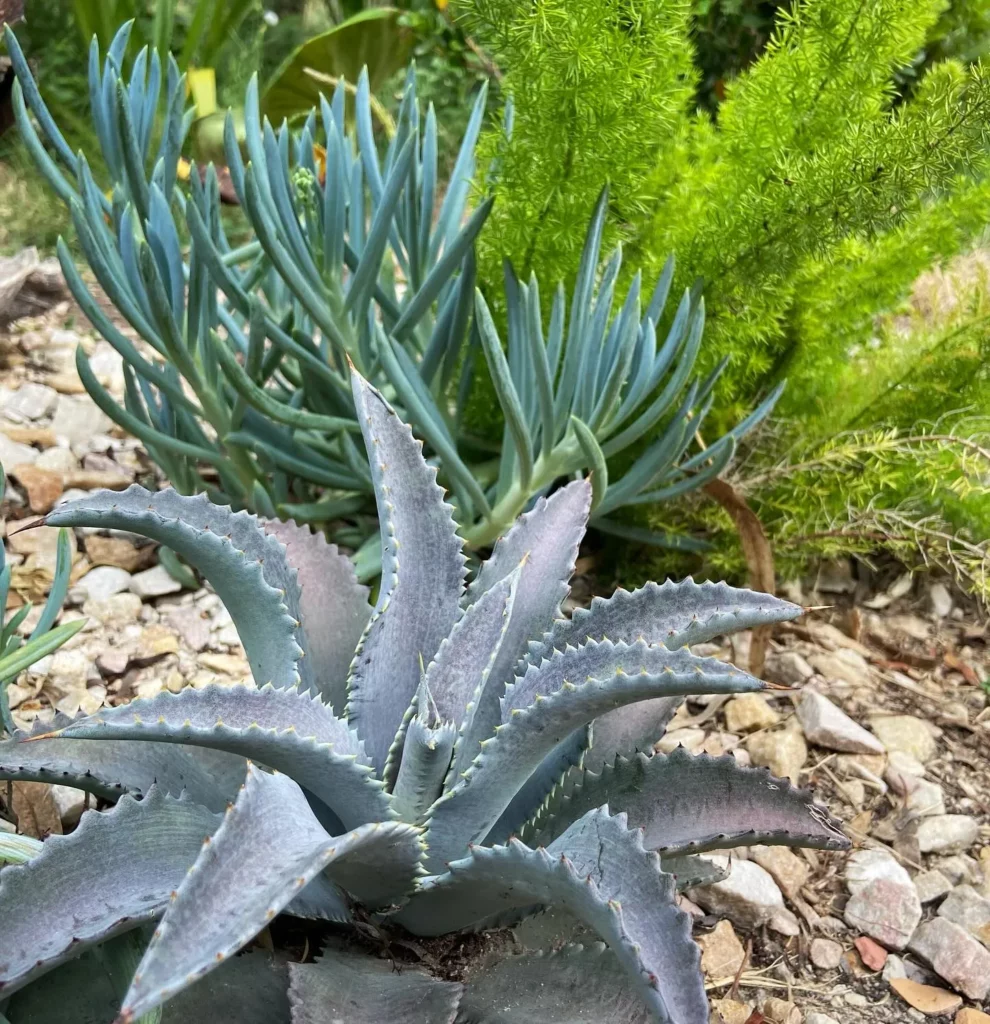Flapjack Plant Kalanchoe luciae, also known as Paddle Plant, displays a distinct and striking appearance that sets it apart from other succulents. This plant’s leaves have a unique shape resembling pancakes, hence the name “Flapjack.”
The fleshy leaves are thick and plump, contributing to the succulent’s ability to store water. The vibrant green color of the leaves is accentuated by red or orange hues along the edges, adding to its visual appeal. Understanding the appearance of Flapjack Plant Kalanchoe luciae is crucial for providing the proper care it needs to thrive.
Light Requirements for Flapjack Plant Kalanchoe luciae

Flapjack Plant Kalanchoe luciae thrives in bright, indirect light. To ensure its optimal growth, place your Flapjack Plant near a sunny window where it can receive partial sun throughout the day. The vibrant green leaves with red or orange hues along the edges will flourish in this light-filled environment.
However, it’s important to be cautious not to expose your Flapjack Plant to direct sunlight for extended periods. Direct sunlight can be too intense and may result in leaf burn. So, strike a balance by providing bright but indirect light to keep your Flapjack Plant happy and healthy.
Watering Flapjack Plant Kalanchoe luciae

Proper watering practices are crucial for the health and well-being of your Flapjack Plant Kalanchoe luciae. This succulent has low water requirements, and overwatering can be detrimental to its health. Follow these tips to ensure you give your plant the right amount of water:
No products found.
- Allow the soil to dry out between waterings. Flapjack Plant Kalanchoe luciae prefers a well-draining soil, so it’s important to let the soil dry out completely before watering again. This will prevent root rot and ensure the plant’s optimal growth.
- Water thoroughly when the top inch of soil feels dry. Stick your finger into the soil about an inch deep. If it feels dry at this depth, it’s time to water your plant. Be sure to water until water drains out of the pot’s drainage holes.
- Avoid overwatering. Flapjack Plant Kalanchoe luciae is sensitive to excess moisture, so it’s important not to overwater. Make sure that the pot has good drainage to allow excess water to escape.
Fertilizing Flapjack Plant Kalanchoe luciae

Flapjack Plant Kalanchoe luciae is a stunning succulent that requires regular fertilization during the growing season to maintain its health and vibrant appearance. By providing the necessary nutrients, you can ensure optimal growth and stunning foliage.
No products found.
Here are some helpful tips for fertilizing your Flapjack Plant:
- Choose a balanced liquid fertilizer to provide a well-rounded nutrient mix for your Flapjack Plant.
- Dilute the fertilizer according to the package instructions before application. This will prevent any potential damage to the plant from excess nutrients.
- Apply the diluted fertilizer solution to your Flapjack Plant every two weeks to ensure consistent nourishment.
- During the dormant period, which usually occurs in winter, it’s best to avoid fertilizing your Flapjack Plant. This allows the plant to rest and conserve energy.
- Always water your Flapjack Plant before applying fertilizer. This helps to prevent root burn and ensures proper absorption of nutrients.
- Remember, less is more when it comes to fertilizing succulents like the Flapjack Plant. Overfertilization can lead to nutrient imbalances and cause harm to the plant.
Potting Flapjack Plant Kalanchoe luciae

Proper potting is essential for the health and growth of your Flapjack Plant Kalanchoe luciae. Here are some tips to ensure your plant thrives:
No products found.
- Choose well-draining soil: Flapjack Plant Kalanchoe luciae prefers a well-draining soil mix to prevent waterlogged roots. Opt for a cactus or succulent mix combined with perlite or coarse sand to enhance drainage.
- Repot every 2-3 years: Flapjack Plant Kalanchoe luciae benefits from repotting every 2-3 years to provide sufficient space for root growth. Check if the roots are tightly packed and transfer the plant into a slightly larger pot if needed.
- Select a pot with drainage holes: When selecting a pot for your Flapjack Plant, choose one with drainage holes at the bottom. This allows excess water to escape, preventing soggy soil and root rot.
Propagation of Flapjack Plant Kalanchoe luciae

If you want to expand your collection of Flapjack Plant Kalanchoe luciae, propagation is a great way to do it. You have two options for propagating this stunning succulent: leaf cuttings and offsets.
Leaf Cuttings
To propagate using leaf cuttings, start by gently removing a healthy leaf from the mother plant. Make sure to use a clean and sharp knife or scissors to avoid any damage.
Next, let the leaf cuttings callus for a few days. This process allows a protective layer to form over the cut end, reducing the risk of rotting.
Once the cuttings are calloused, you can place them in well-draining soil. Ensure that the soil is slightly moist before inserting the cut end of the leaf about an inch into the soil.
Provide the cuttings with bright, indirect light to encourage root development. Mist the leaves occasionally to maintain humidity and prevent them from drying out.
No products found.
Offsets
If your Flapjack Plant Kalanchoe luciae produces offsets, you can use these as propagation material as well. Offsets are smaller plants that grow alongside the main plant, usually at the base. They can be gently separated from the mother plant using clean and sharp tools.
Once separated, allow the offsets to callus for a few days before potting them in well-draining soil. Ensure that the soil is slightly moist and provide the offsets with bright, indirect light.
Growth and Development of Flapjack Plant Kalanchoe luciae

Flapjack Plant Kalanchoe luciae is known for its slow but steady growth, with new leaves emerging from the center of the plant. Over time, with proper care and favorable conditions, this stunning succulent can reach a height of approximately 1 to 2 feet, becoming an eye-catching addition to your indoor plant collection.
Here are some key insights into the growth and development of the Flapjack Plant:
- The plant’s growth is typically characterized by the emergence of new leaves that gradually unfurl, adding to its unique pancake-like appearance.
- As the plant matures, it may develop a stem-like structure, with older leaves at the bottom and younger leaves forming at the top.
- Flapjack Plant Kalanchoe luciae grows best in a well-lit environment with indirect sunlight. Providing adequate light helps promote healthy growth and vibrant leaf coloration.
- During the growing season, the plant may produce small clusters of yellow flowers. While the flowers are visually appealing, the primary charm of the Flapjack Plant lies in its striking foliage.
- With patience and consistent care, you can witness the gradual development of this succulent, watching as it matures and becomes more visually captivating over time.
Dealing with Pests and Diseases for Flapjack Plant Kalanchoe luciae

Flapjack Plant Kalanchoe luciae is known for its resilient nature and natural resistance to pests and diseases. However, on rare occasions, it may encounter issues with mealybugs or spider mites. To ensure the health and vitality of your plant, it’s essential to take prompt action against these nuisances.
To begin, keep a vigilant eye on your Flapjack Plant, frequently inspecting its leaves and stems for any signs of infestation. Mealybugs appear as cottony white clusters, often hiding beneath the leaves and in leaf axils. Spider mites, on the other hand, leave tiny webbing on the plant and cause yellowing or stippling of the leaves.
If you spot any signs of mealybugs or spider mites, swift intervention is crucial. Start by isolating the affected plant to prevent the infestation from spreading to other plants in your collection.
Utilize organic insecticidal sprays specifically formulated for succulents to treat the infestation. Alternatively, you can manually remove the pests by gently wiping them away using a cotton swab dipped in rubbing alcohol.
Remember, prevention is key to keeping pests and diseases at bay. Regularly inspect your Flapjack Plant for any signs of infestation, especially if you have recently introduced new plants to your collection.
Additionally, maintain a clean and well-ventilated growing environment, as pests are more likely to thrive in conditions where there is poor airflow and excess moisture.
By staying proactive and addressing pest and disease issues promptly, you can ensure the health and longevity of your Flapjack Plant Kalanchoe luciae, allowing it to thrive and remain a stunning addition to your indoor succulent garden.
Other Care Tips for Flapjack Plant Kalanchoe luciae
In addition to the specific care tips mentioned above, there are a few more things to keep in mind when taking care of your Flapjack Plant Kalanchoe luciae.
Avoid Drafts
Flapjack Plant Kalanchoe luciae prefers stable temperatures, so it’s best to keep it away from drafts. Avoid placing it near open windows or doors where it may be exposed to cold or hot air currents.
Handle with Care
The leaves of Flapjack Plant Kalanchoe luciae are sensitive to touch and can bruise easily. Avoid overhandling the plant and refrain from touching the leaves unnecessarily. This will help prevent any damage and keep your plant looking its best.
Monitor Soil Moisture
Regularly check the moisture level of the soil in the pot. Stick your finger about an inch into the soil – if it feels dry, it’s time to water. Flapjack Plant Kalanchoe luciae prefers a slightly drier soil, so be careful not to overwater. Adjust your watering schedule according to the moisture needs of the plant.
Conclusion
By following these care tips for your Flapjack Plant Kalanchoe luciae, you can ensure its vibrant and thriving growth. Providing the right amount of light is crucial for the plant’s well-being.
Place it near a sunny window where it can enjoy bright, indirect light throughout the day, but be cautious of direct sunlight to prevent leaf burn.
In terms of watering, allow the soil to dry out between waterings to avoid overwatering and root rot. Water thoroughly when the top inch of soil feels dry and ensure excess water drains out of the pot.
Additionally, fertilize your Flapjack Plant with a balanced liquid fertilizer diluted in water every two weeks during the growing season to supply essential nutrients.
When repotting, use a well-draining cactus or succulent mix combined with perlite or coarse sand for optimal drainage. Repot every 2-3 years to give the roots enough space to grow.
Propagation can be done through leaf cuttings or offsets, ensuring they are placed in well-draining soil, receiving bright, indirect light, and occasional misting to prevent drying out.
With these care practices in place, your Flapjack Plant Kalanchoe luciae will flourish and become a captivating addition to your indoor succulent collection, showcasing its distinctive pancake-shaped leaves and vibrant green colors with red or orange edges.
FAQ
What does the Flapjack Plant Kalanchoe luciae look like?
The Flapjack Plant Kalanchoe luciae, also known as Paddle Plant, has fleshy leaves shaped like pancakes. These leaves have a vibrant green color with red or orange hues along the edges.
What are the light requirements for the Flapjack Plant Kalanchoe luciae?
The Flapjack Plant Kalanchoe luciae thrives in bright, indirect light. It should be placed near a sunny window to receive partial sun throughout the day. However, direct sunlight should be avoided as it can lead to leaf burn.
How often should I water the Flapjack Plant Kalanchoe luciae?
The Flapjack Plant Kalanchoe luciae has low water requirements. It is crucial to allow the soil to dry out between waterings to prevent root rot. Water thoroughly when the top inch of soil feels dry, ensuring excess water drains out of the pot.
Does the Flapjack Plant Kalanchoe luciae need fertilization?
Yes, the Flapjack Plant Kalanchoe luciae benefits from a balanced liquid fertilizer during the growing season. Apply a diluted fertilizer solution once every two weeks to provide the necessary nutrients for healthy growth. Avoid fertilizing during the dormant period.
What type of soil should I use when potting the Flapjack Plant Kalanchoe luciae?
The Flapjack Plant Kalanchoe luciae prefers well-draining soil. It is recommended to use a cactus or succulent mix combined with perlite or coarse sand to enhance drainage. Repotting every 2-3 years is advisable to provide sufficient space for root growth. Ensure the chosen pot has drainage holes to prevent waterlogging.
How can I propagate the Flapjack Plant Kalanchoe luciae?
The Flapjack Plant Kalanchoe luciae can be propagated through leaf cuttings or offsets. Gently remove a healthy leaf or offset and allow it to callus for a few days before planting it in well-draining soil. Bright, indirect light is essential for the cuttings, and occasional misting prevents drying out.
How does the Flapjack Plant Kalanchoe luciae grow and develop?
The Flapjack Plant Kalanchoe luciae typically grows slowly, producing new leaves from the center of the plant. Over time, it may reach a height of around 1-2 feet with proper care and favorable conditions.
How can I deal with pests and diseases for the Flapjack Plant Kalanchoe luciae?
The Flapjack Plant Kalanchoe luciae is generally resistant to pests and diseases. However, mealybugs or spider mites can occasionally be a concern. Regularly inspect the plant and, if necessary, treat any infestations promptly using organic insecticidal sprays or by wiping the pests away with a cotton swab dipped in rubbing alcohol.
Are there any additional care tips for the Flapjack Plant Kalanchoe luciae?
Along with the mentioned care tips, it is important to keep the Flapjack Plant Kalanchoe luciae away from drafts, as it prefers stable temperatures. Avoid overhandling the leaves, as they are sensitive to touch and can bruise easily. Regularly check the soil moisture and adjust watering accordingly.





